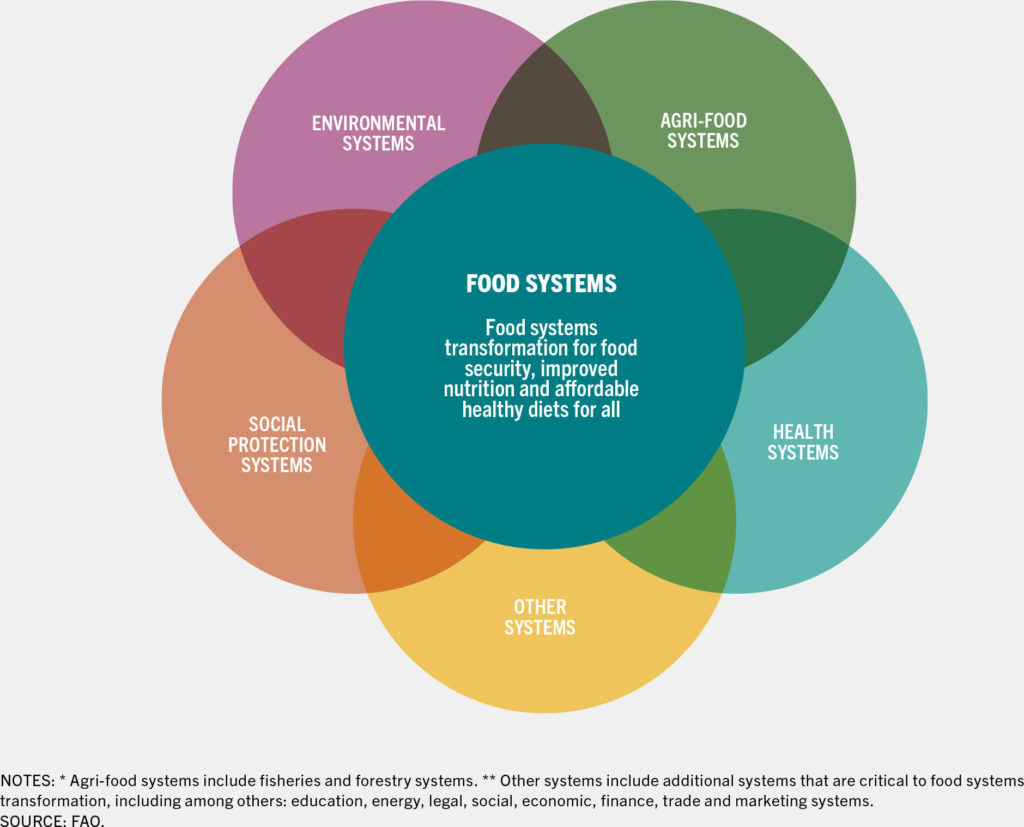Well before the COVID-19 pandemic, we were already not on track to ending world hunger and malnutrition in all its forms by 2030. Now, the pandemic has made this goal significantly more challenging. This report presents the first global assessment of food insecurity and malnutrition for 2020 and offers some indication of what hunger and malnutrition would look like by 2030, in a scenario further complicated by the enduring effects of the pandemic. These trends highlight the need for deeper reflection on how to better address the global food security and nutrition situation.
One of the key questions posed in this year’s report is – How did the world get to this critical point? To answer, the report draws on the analyses of the past four editions, which have produced a vast, evidence-based body of knowledge of the major drivers behind the recent changes in food security and nutrition. This is updated with new data to feed into a broader analysis of how these drivers interact, allowing for a holistic view of their combined effects both on each other and on food systems. In turn, this informs an in-depth look at how to move from silo solutions to integrated food systems solutions that specifically address the challenges posed by the major drivers, highlighting also the types of policy and investment portfolios required to transform food systems for food security, improved nutrition and affordable healthy diets for all.
➔ It is projected that between 720 and 811 million people in the world faced hunger in 2020. Considering the middle of the projected range (768 million), around 118 million more people were facing hunger in 2020 than in 2019 – or as many as 161 million more, considering the upper bound of the range.
➔ More than half of the world’s undernourished are found in Asia (418 million) and more than one-third in Africa (282 million). Compared with 2019, about 46 million more people in Africa, 57 million more in Asia, and about 14 million more in Latin America and the Caribbean were affected by hunger in 2020.
➔ Close to 12 percent of the global population was severely food insecure in 2020, representing 928 million people – 148 million more than in 2019.
➔ At the global level, the gender gap in the prevalence of moderate or severe food insecurity has grown even larger in the year of the COVID-19 pandemic, with the prevalence of moderate or severe food insecurity being 10 percent higher among women than men in 2020, compared to 6 percent in 2019.
➔ The high cost of healthy diets coupled with persistent high levels of income inequality put healthy diets out of reach for around 3 billion people, especially the poor, in every region of the world in 2019. This number is slightly less than in 2017 and will likely increase in most regions in 2020 due to the COVID-19 pandemic.
➔ Shifting to healthy diets that include sustainability considerations can contribute to reducing health and climate change costs by 2030, because the hidden costs of these diets are lower compared with those of current consumption patterns.
Health systems and their services are vital in ensuring that people are able to consume foods and utilize the necessary nutrients for their health and well-being. Food systems may exert both positive and negative impacts on human health through multiple interrelated pathways, which are influenced by factors arising from within and outside food systems, including social, economic and environmental determinants of health. Closer examination of the food–health nexus indicates that unhealthy diets are among the key risk factors driving the global burden of disease; moreover, the negative health impacts associated with poor quality diets are significant. According to the Global Burden of Disease initiative, 20 percent of premature deaths worldwide are associated with a poor quality diet. Poor quality diets include those diets with too high a content of foods high in fats, sugars and/or salt of minimal nutritional value and too low levels of protein quality. Adequate breastfeeding and child feeding for infants and young children are important to ensure good quality diets. With current food consumption patterns, diet-related health costs linked to mortality and NCDs are projected to exceed USD 1.3 trillion per year by 2030.
Policies, laws, regulations and investments in health systems form part of the food–health nexus. Universal health coverage is essential to ensure healthy lives and to promote human well-being. Universal coverage implies that all people can use the health services they need and that these services are of sufficient quality and do not expose people to financial hardship. Inputs from health systems can support and reinforce food systems transformation, for example, through the provision of essential nutrition actions in universal health coverage, including among others:
- Nutrition counselling during pregnancy and support to breastfeeding and complementary feeding, alongside food system measures to regulate the marketing and promotion of breastmilk substitutes and foods for infants and young children.
- Early detection and support for the management or treatment of different forms of malnutrition, which is critical in informing food systems transformation, as well as social protection needs in crisis situations.
- The use of micronutrient supplements for vulnerable groups can be an appropriate interim measure until food systems are transformed to provide greater dietary diversity and ensure everyone has access to affordable healthy diets at all times.
For further informations visit the website.


